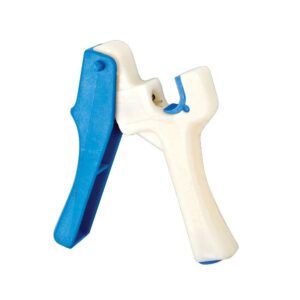Project details
Skill
Cost
Estimated Time
Bamboo grows healthy and lush rapidly, making it a desirable choice for a natural privacy barrier in your yard. This guide will walk you through planting a bamboo screen, from choosing a suitable variety for your climate to caring for your plants properly. In the video above, This Old House landscape contractor Roger Cook works with a pair of Las Vegas, Nevada homeowners to plant this exotic feature in their backyard.
Choose the Right Bamboo
There are many factors to account for when picking the best bamboo for your project, including:
- Climate suitability
- Growth rate
- Maximum height
- How much the variety spreads:
- Clumping bamboo has a non-invasive rhizome structure, and as the name suggests, its roots form clumps that stay close together. If your property shares a border with your neighbor, you may want to choose a type of clumping bamboo.
- Running bamboo spreads much more rapidly and can be very effective for a privacy screen, as it will fill in the space between the plants. However, if your property borders your neighbor’s, you will need to install a barrier underground to prevent the plant from spreading where you don’t want it to.
For the project in the video, Cook chose giant timber bamboo, which can grow up to 8 to 10 feet tall in just a few years. This variety is great for creating a dense, tall privacy screen in a short amount of time.
Prepare the Bamboo Planting Site
Before planting, make sure your site is prepped and ready to give your tree screen the best start.
- Measure and mark the area where you plan to plant the bamboo screen.
- Clear the area of any existing vegetation or debris.
- Test the soil pH and adjust it if necessary to achieve a slightly acidic to neutral range (6. 0-7. 0).
- Improve soil drainage if needed by adding organic matter or creating raised beds.
Clearing the Area
Remove any existing plants and debris from the area so that the bamboo does not have to compete with other shrubs and weeds for resources.
Soil Testing and Amending
Slightly acidic to neutral pH levels are ideal for most bamboo varieties. You can use organic compost or specific soil pH modifiers to change the acidity as needed. Check out this guide for more information on how to make planting soil that meets your needs.
Steps for Planting the Bamboo Screen
Here’s how to plant your bamboo screen:
- Space bamboo plants 5 to 6 feet apart in a staggered row. This gives them enough space to grow while creating a more natural appearance. It also helps them blend together faster as they begin to spread.
- Dig holes two to three times wider than the plant container and as deep as the container’s height for each plant so the roots can spread.
- Flood each hole with water and wet the surrounding soil to settle the soil and help the plants establish roots.
- Mix the excavated soil with planter’s mix (compost and organic fertilizer) at a ratio of two wheelbarrows of mix per hole to make a nutrient-rich environment for the plants.
- Moisten the mixed soil before backfilling to reduce transplant shock.
- Remove each plant from its container and place it in the hole.
- Backfill around the root ball with the moistened, mixed soil.
- Water the area around each plant thoroughly.
Install an Irrigation System For Bamboo
Installing an irrigation system will keep your bamboo screen healthy and thriving, especially in hot and dry climates such as Las Vegas, while reducing the need for maintenance.
- Locate the existing irrigation line.
- Use a hole-punch tool to create openings in the main line for emitters. Keep the punches consistent so the water emitters can be properly placed.
- Insert 2-gallon-per-hour emitters into the punched holes.
- Attach irrigation tubing to each emitter to direct water flow to the base of the bamboo plants.
- Put four emitters around each plant: one in the center and three evenly spaced around the top.
- Cover the irrigation tubing with mulch to protect it from damage and keep the soil moist.
Mulch and Finishing Bamboo Screen Touches
Mulching helps retain moisture and suppress weeds, keeping your bamboo screen thick and beautiful.
- Apply a 2-inch layer of cedar bark mulch around each plant. This acts as a protective barrier against weeds and helps retain soil moisture.
- Evenly cover the entire planting area with mulch, being careful not to pile it against the bamboo stems to avoid rot.
- Cover the irrigation tubing completely with the mulch.
Caring for Your Bamboo Screen
Follow these care tips to keep your bamboo screen full and green and to maintain your privacy.
- Water deeply and regularly, especially during the first growing season.
- Fertilize annually in the spring with a balanced, slow-release fertilizer for robust growth.
- Prune any dead or yellowing culms (stems) at ground level to prompt new growth.
- Control spread and keep the screen the size and shape you want it by installing root barriers or regularly trimming runners.
- Monitor for pests and diseases, treating them immediately if any issues arise.
Natural Screens for Different Climates
The video demonstrates planting bamboo in a hot, dry climate, but factors such as temperature, humidity, and soil type impact bamboo growth in different regions.
Cold Climates
In colder areas, bamboo needs extra care to survive harsh winters.
- Choose cold-hardy bamboo varieties such as Fargesia or certain Phyllostachys species.
- Use mulch and burlap wraps for extra insulation and protection from cold winter temperatures during the first few years.
- Plant in spring to give the bamboo time to establish before winter sets in.
Humid Climates
High humidity can affect bamboo’s growth and health.
- Make sure your plants and soil have good air circulation to prevent fungal infections.
- Space plants slightly farther apart to accommodate higher humidity levels.
- Monitor soil moisture carefully to avoid overwatering. Waterlogging can damage the roots and kill the plants.
Coastal Areas
Bamboo in coastal areas faces unique challenges, such as salt and wind erosion.
- Select salt-tolerant bamboo varieties if planting near the ocean.
- Consider wind protection for young plants until they’re well-established.
- Use additional organic matter in sandy soils to improve water retention.
Bamboo Alternatives
If bamboo won’t work for your climate, soil, or look preferences, check out these alternatives. Each option has its own benefits, growth rate, and maintenance needs, so research them carefully before making a decision.
- Privet: Rapid growth rate and tolerates heavy pruning; also attracts pollinators
- Arborvitae: Fast growing and provides year-round privacy; low maintenance and drought tolerant
- Boxwood: Dense, evergreen foliage that can be easily shaped and taken care of
- Holly: Natural barrier due to its prickly leaves and pest resistance
- Leyland cypress: Extremely fast growing and adapts well to different soil types and climate conditions


